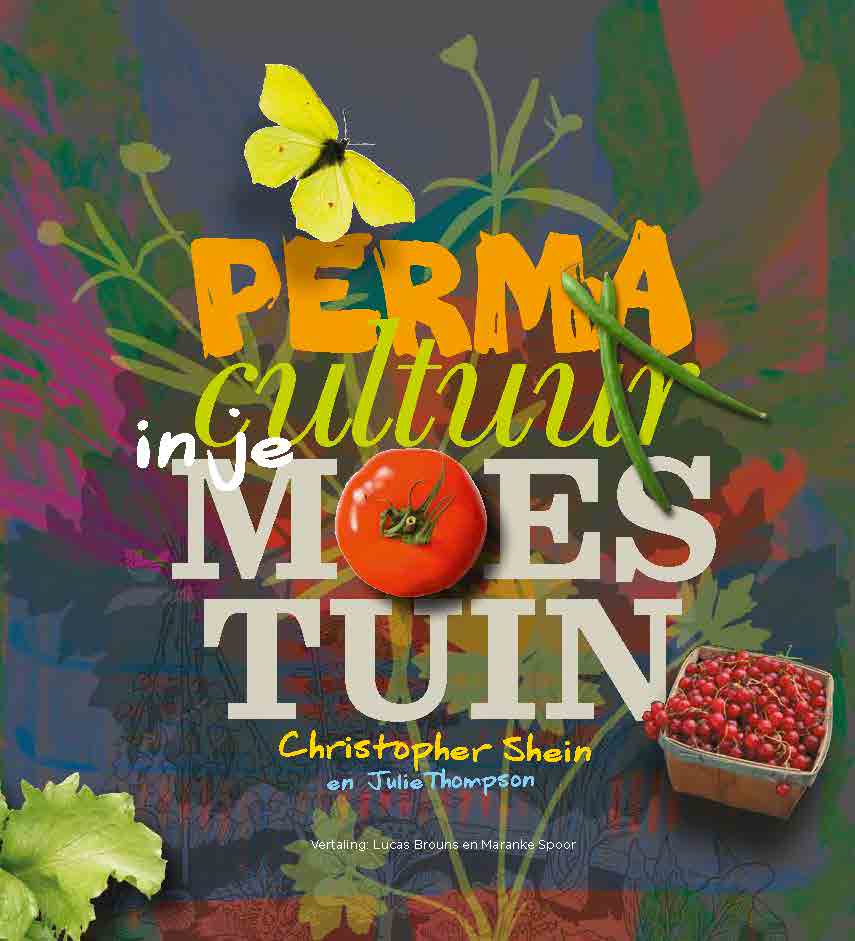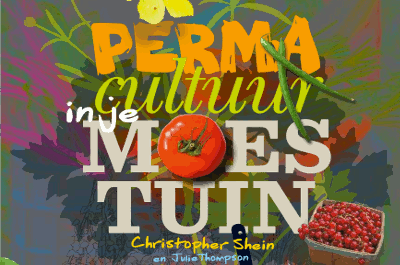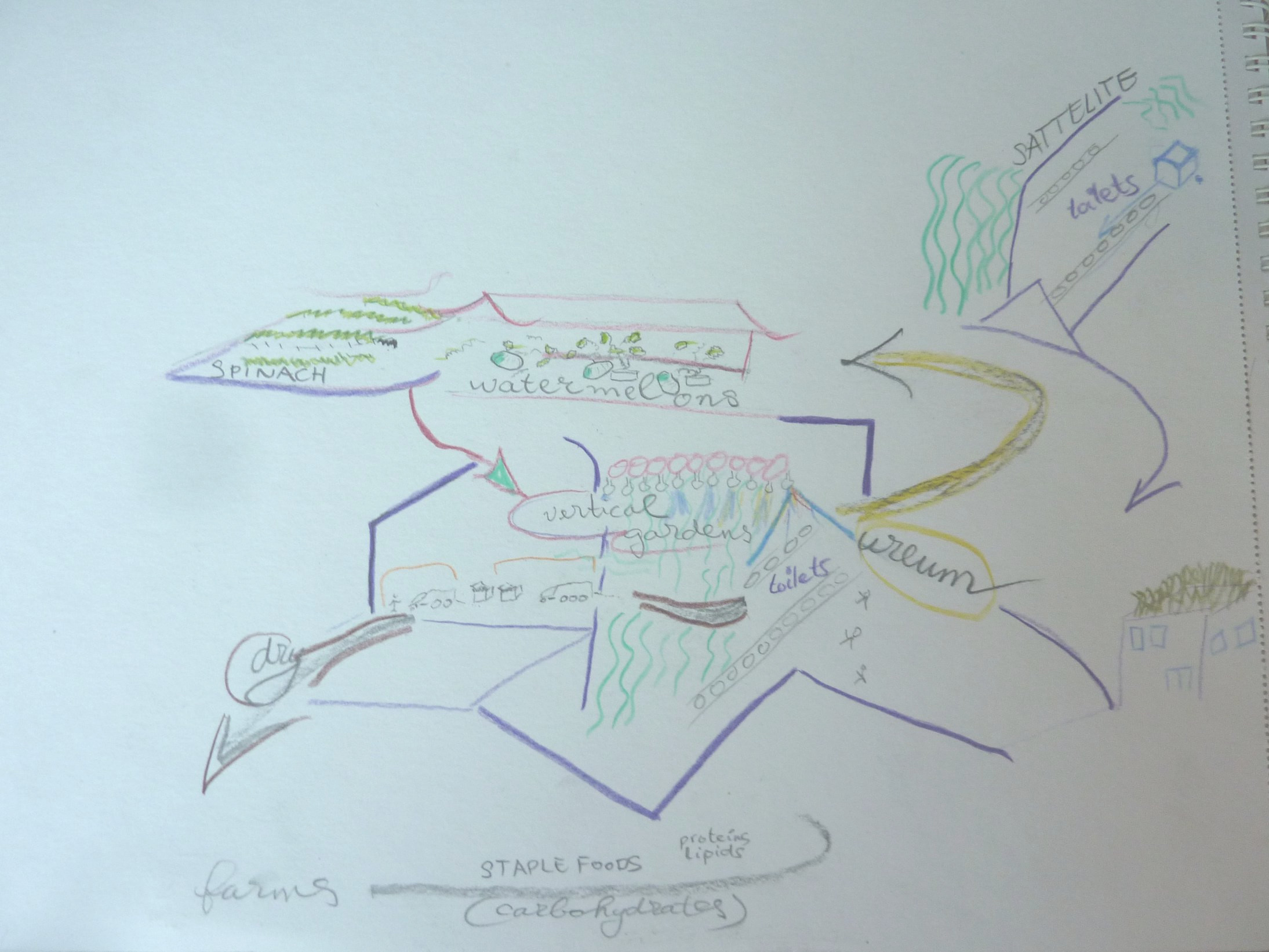Dit is een onderzoeksrapport nadat we met drie mensen een maand aan een project hebben gewerkt. Je leest de achtergrond op deze andere pagina, die ik later heb geschreven. Hier volgt dus het onderzoeksverslag voor de mensen die met dit project zouden verdergaan. (Het project is volgens mij eerder bedoeld als visitekaartje van het bedrijf om te laten zien wat ze allemaal mogelijk achten, dan dat ze het daadwerkelijk willen uitvoeren.)
thank you for READing ME!
Hi, this is a guide on how to read & use the research material that was collected by the Climate-KIC – Pioneers into practice group by Jason, Mar and Lucas in October 2014 with help from András and Saurabh from BIOPOLUS for
the WATERMALL project
INTRODUCTION
HOW TO USE THIS GUIDE
> GOOGLE DRIVE FOLDER (and links that look like it) will take you to our Google drive documents.
In case this document is printed find it here: http://tinyurl.com/m2uco4s
Other hyperlinks can be found in the LINKS AND REFERENCES section
WHAT IS A WATERMALL (IN OUR MIND)
A Watermall is a multifunctional spot designed for resource recycling in high density urban areas, especially slums, where there is no sewage system underground. Its main functions are sanitation services, providing drinking water, grey water recycling, black water treatment (if black water is created), rainwater storage, food production, biogas / electricity production, and more services and functions that strengthen each other in the real life context.
CASE STUDIES – WHAT ARE SLUMS LIKE
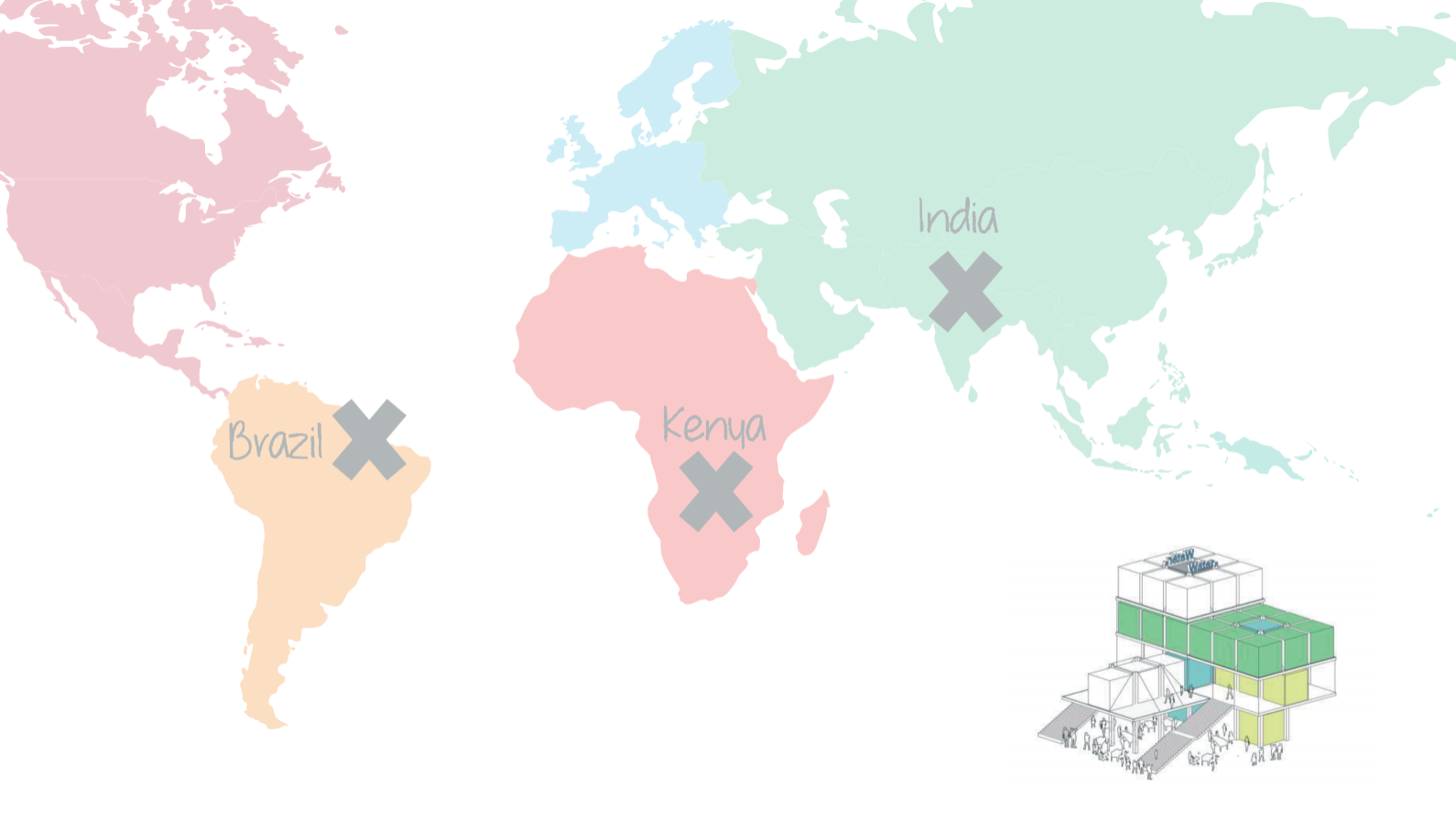
Where would a watermall be a good investment for BioPolus’ partners and for the possible users? We wanted to find which social and techno factors are most important for making this decision. We did three case studies on slums. We chose slums on which you can quite easily find information on the web, because our project had a limited time (we could not travel around to other continents and do the actual real-life investigations). The slums we studied have been in place for some or even many decades. In many other cases however there will be little information on the world wide web.
On the slums we studied, the information was sometimes very biased because the source of the information can have high interest (e.g. ngo’s may want to have projects for ‘poor people’, municipalities may want to sell land in the real estate marketplace).
The slums we studied are Kibera (Nairobi), Morro do Alemão (Rio de Janeiro) and Dharavi (Mumbai). Our findings are in >PARAMETERS WM, including the sources. The sheet contains our first big list of social and technological parameters. They can be sorted by category and/or subcategory.
WORKHOPS
SOCIAL PARAMETERS -WS1
Social parameters are things that would affect the adoption/operation/management or other factors related to the Watermall, for instance – what are the current social norms associated with water usage? How important is hygiene or sanitation and what would happen if that is disrupted?
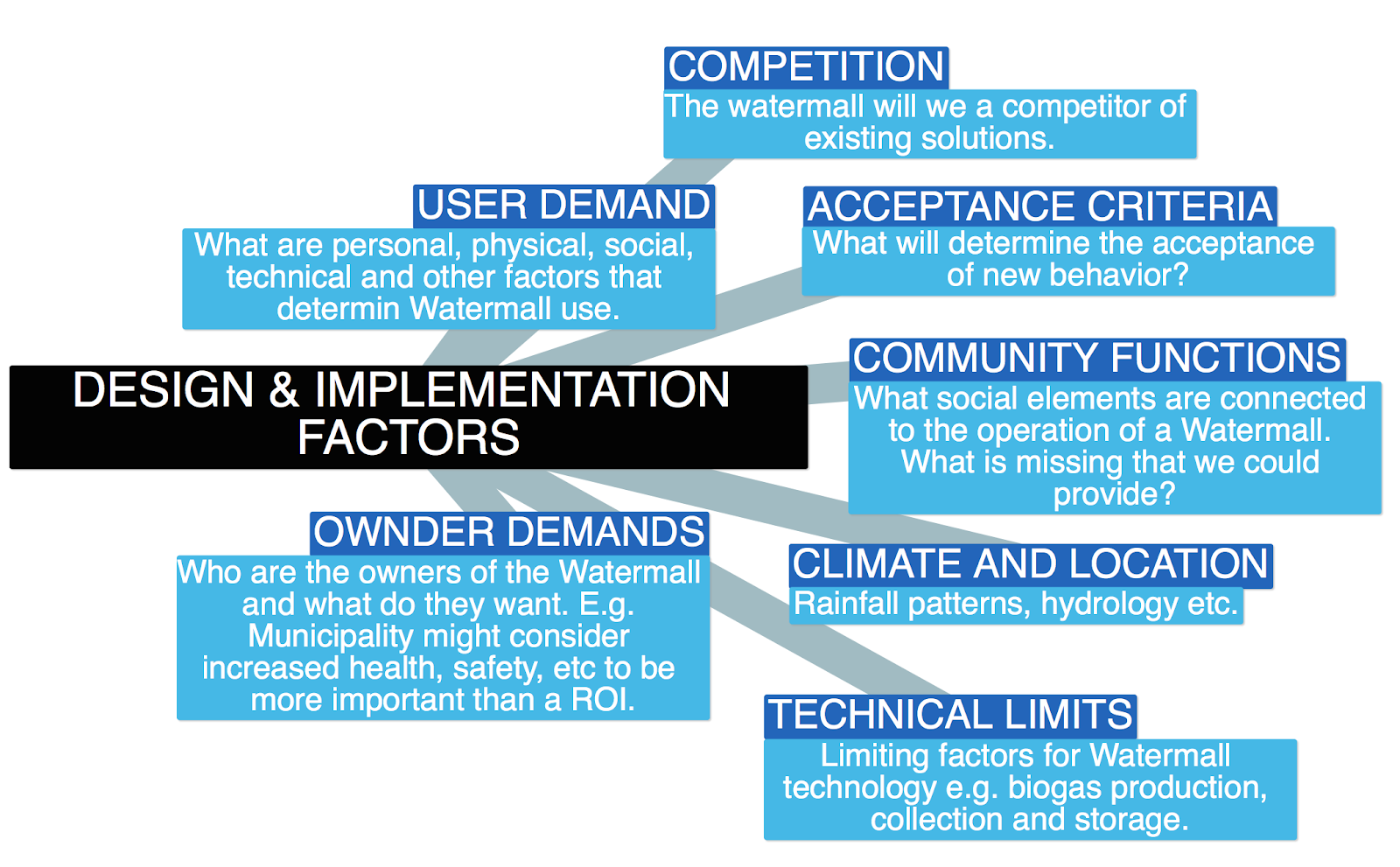
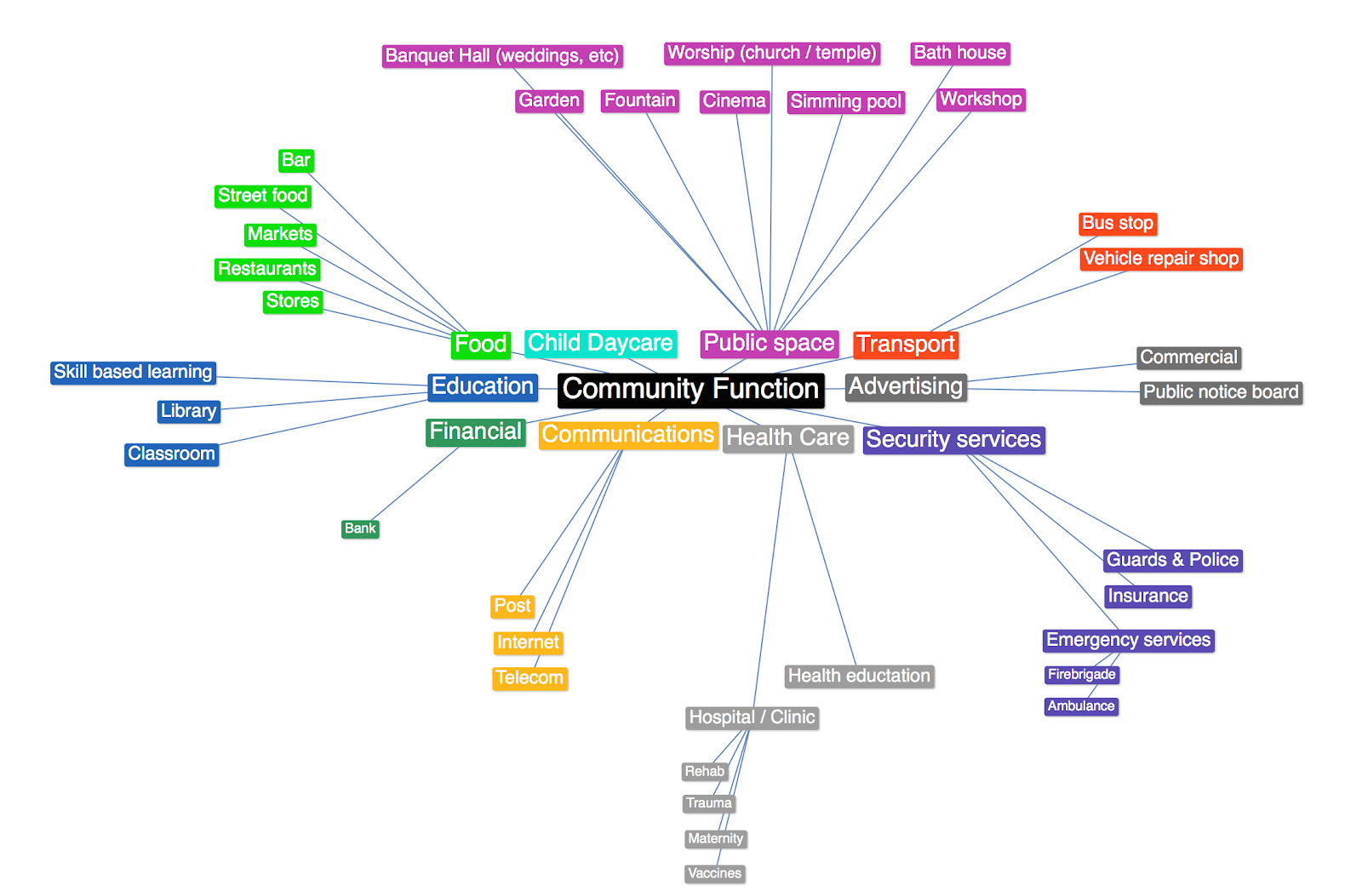
Should the Watermall provide a library or not? Above are some diagrams depicting community functions and associated design and implementation factors that may be important to consider during planning and implementation phases.
Our feeling is that it would be the most sensible if Watermall were to offer water-related services first (washing bikes/rickshaws or carpet cleaning) and then see what social services are important but missing in those communities to increase value to the community (schools, clinics, etc.).
TECHNICAL PARAMETERS – WS1
See >PARAMETERS WM The listed technical parameters including data from 3 case study slums.

Above is a Flow diagram of inputs, processes and outputs that we determined to be of significance for modelling the basic elements of the water mall to get an idea of scale + footprint.
A detailed spreadsheet with the main technical parameters can be found in the document >MASSFLOW WM. The document includes step-by-step instructions detailing how the spreadsheet can be modified and used.
BUSINESS MODEL CANVAS – WS2
With Saurabh Saraf we did a workshop on selling points to communicate to business partners. As Saurabh was rewriting a brochure for possible partners. And to further develop the Watermall business model. Saurabh suggested this scheme to work with. www.businessmodelgeneration.com/canvas/bmc
We did this in 3 shifts, as you see >HERE. One is to analyse ngo’s and impact investors as a client/partner, one is to analyse residents of the townships as partners/clients, and one is to analyse the (municipal) government as a partner/client.
DIMENSIONS + MAIN INPUTS AND OUTPUTS
See excell >MASSFLOW WM. for a more detailed look at the model.
Also see presentation >WATERMALL PRESENTATION

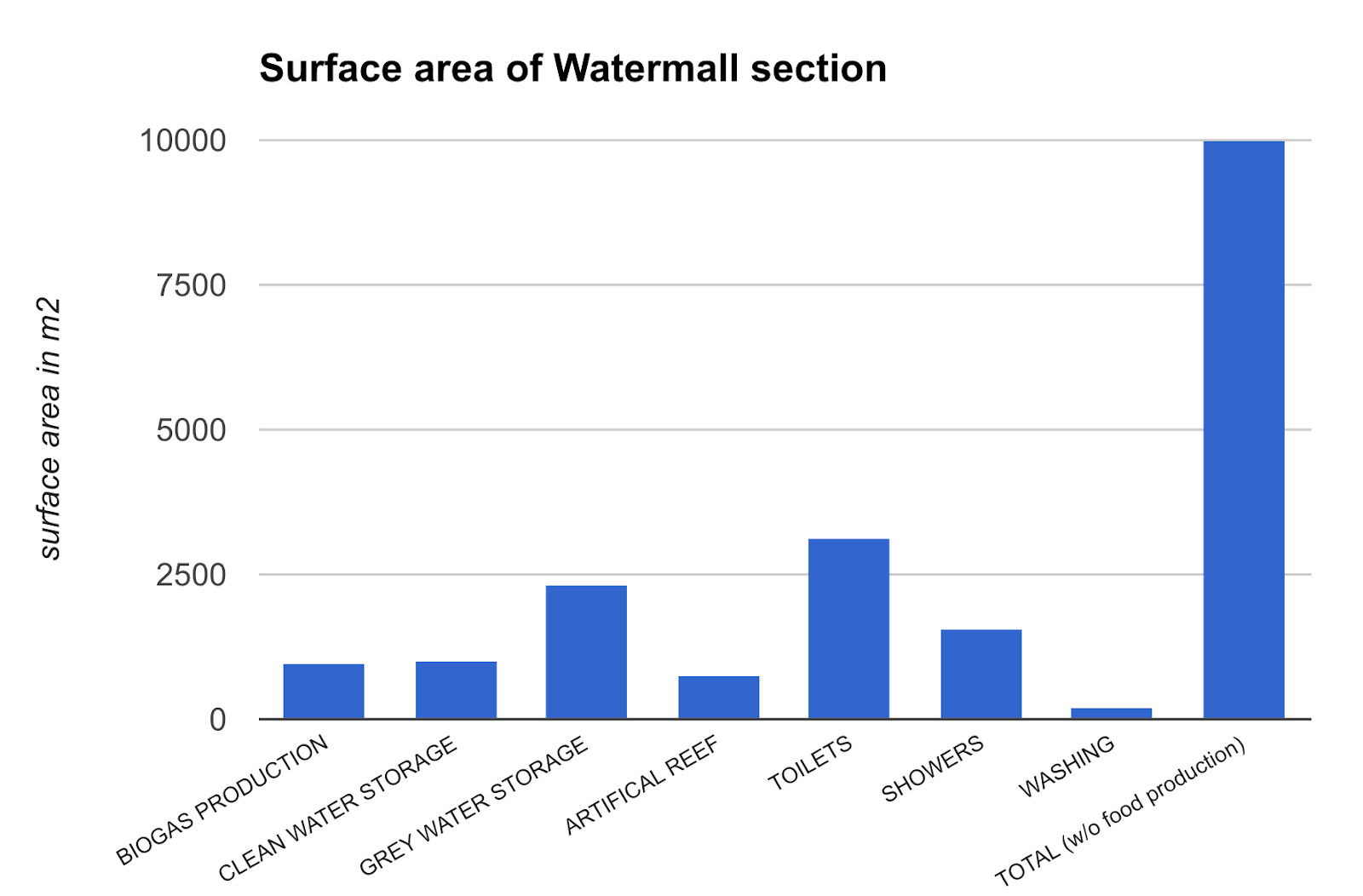
Things we did not count in the surface area: administrative space, toolshed, grey water to fresh water treatment facility, biogas storage and compressor

A basic model showering the footprint of the different facilities / modules. Heights are generally 3 and 5 meters per layer. Though it should be noted that this is a minimum calculated footprint size and a real structure would be at least 20-30% larger since we didn’t account for corridors and space for accessing the facilities. So for instance a toilet block of 900m2 is counted as 90 toilets side by side which is not possible in real life. Little people populate the image for scale.

Here is a top down view of the facility (same as in the introduction) with a layered view to decrease the footprint of the Watermall (around 120 x 100 m) .

SketchUp version of the watermall, the idea was mostly to get an idea of the scale of the facility based on our limited and rough calculations.
WATERMALL WATER NEEDS
See excell >MASSFLOW WM. for a more detailed look at the model. To construct the sankey diagram you can use the online tool SankeyMATIC and this diagram flows.
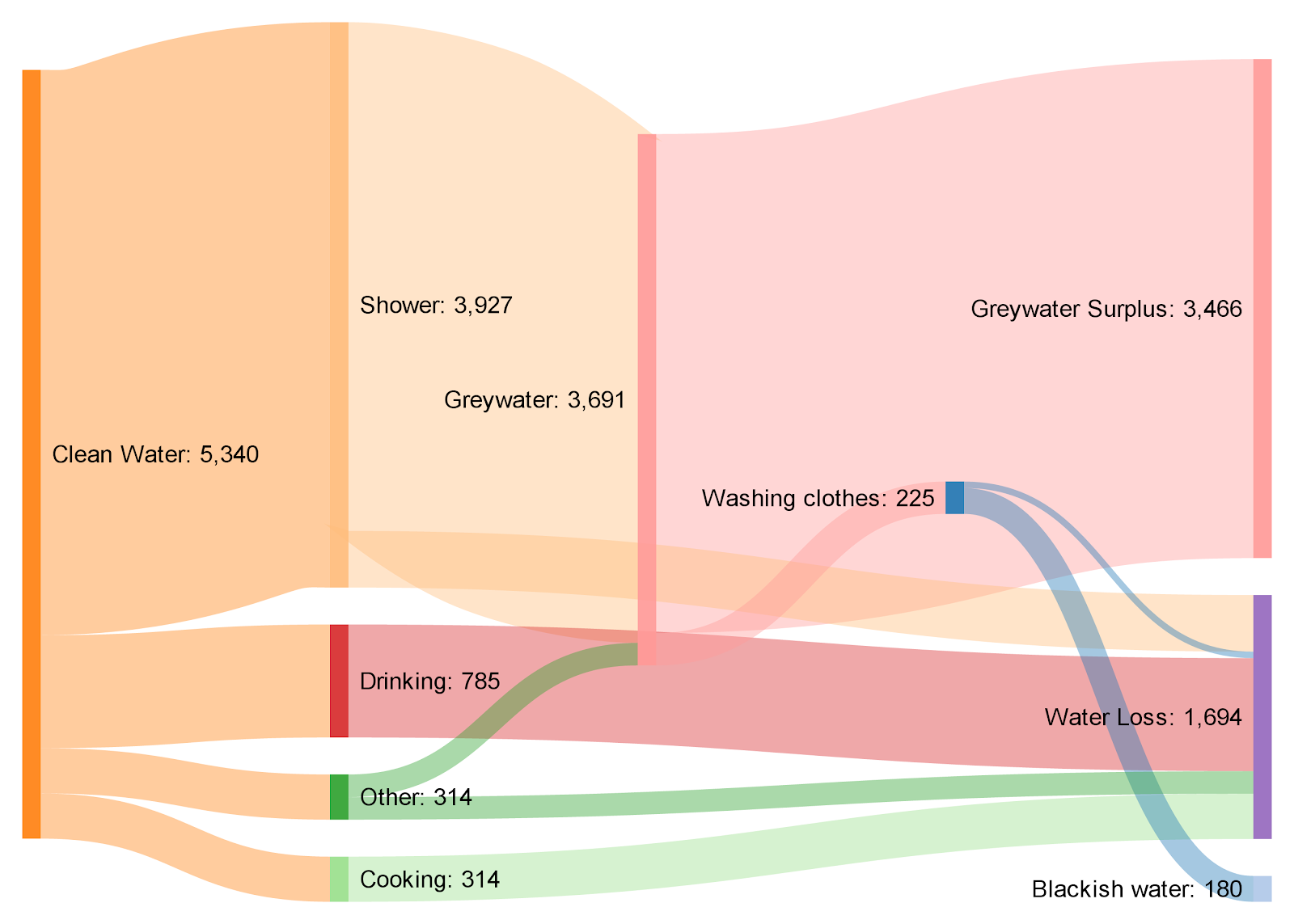
Above there is a diagram of the water use (in m3) and the reuse loops (assuming the use of dry toilets and excluding irrigation). ‘Blackish’ and ‘grey’ water may be treated afterwards to obtain again clean water. If we assume that greywater is recycled 3 times a day, greywater volume will drop from 3.691 m3 a day to 1.230 m3, however water losses of clean water (1.659 m3) must be accounted for as ‘new’ clean water inputs in the water balance.
SEED MIXES FOR AEROPONICS
Lucas was asked to suggest combinations of plants to use in an aeroponics system. András told Sára is looking into micro greens and baby leafs.
(Microgreens = you harvest sprouts, like alfalfa; baby leaves = you harvest very young salad plants and herbs, like cress.)
Sára’s goal is to sow a mixture of seeds, the plants grow up equally fast, and you harvest them as a mix that can be used together for preparing meals (e.g. the plants have to taste good, in a certain balance).
My (Lucas) background is gardening in soil. I have estimated the growth rate of a series of plants from my experience with these plants growing in gardens, market gardens and in ‘the wild’.
The plants are put in five categories, from fast growing (fastmix) to slower and slowest. Next step would be to make useful combinations within each category.
I started with baby leafs. I got to work one day on this. I did not start the microgreens (other sheet in this document).
I have not only taken the plants that are now already popular in hydroponics, but also made suggestions for plants I think could be useful for health, quick biomass and taste/usefulness in the kitchen. This you will see in the column ‘Popular already? <yes/?/no>’.
The plants are in this file: 20141014 plants aeroponics lucas
PRESENTATION
see presentation PRESENTATION WM
In the Watermall mass/flow calculations we have not used flushing toilets. Once we saw how many nutrients we had to deal with (in food production) we decided to only take the nutrients from urine. We separate the urine and the dry faeces using dry toilets. In this way, we don’t create the problem of black water, which is more difficult for the artificial reef (or Biopolus name) to handle. Grey water is easier and faster to recycle and so it reduces the required size of water storage.
For faeces there are then two practical options, biogas production or direct composting on site or off site depending on the available footprint. Biogas production could be very viable and allow large amounts of water and energy to the local community. Basic calculations were very promising. It may be more efficient if ‘dry’ poo is fermented elsewhere and the compost to be sold to farms (slide 23 in the presentation).
In the ‘WATERMALL presentation’ you will see what influences the dimensions of the infrastructure (presentation slide 18). This is a raw picture of what you can get as inputs and outputs.
SUMMARY
|
SUMMARY
|
VALUE
|
DIMENSIONS
|
|
FOOD PRODUCTION
|
21948
|
m2 (5 layers, double yield)
|
|
FOOD PRODUCTION
|
1.40
|
kg/month Spinach per person
|
|
ENERGY production
|
10
|
kWh/person/day
|
|
ENERGY production
|
1,523
|
MWh/day
|
|
DAILY ENERGY USAGE
|
84
|
MWh/day
|
|
DAILY ENERGY EXPORT
|
1439
|
MWh/day
|
|
DAILY WATER USAGE
|
5565
|
M3/DAY
|
|
DAILY WATER OUTPUT/LOSS
|
1694
|
M3/DAY
|
See previous sections and tables for more information.
TODO
Find more info on slums in S.E. Asia – especially newer slums.
Find out about recycling techniques and technologies in urban slums
Find out about tribal sizes in slum populations (family groups, castes, etc)
LINKS & REFERENCES
Links to source material can be found in each documents own LINKS section.
> GOOGLE DRIVE FOLDER
https://drive.google.com/open?id=0B_xuCypEskSlM2IzVVNQTUZLN28&authuser=0
> TOILET OPTIONS
https://drive.google.com/open?id=0B9CACfLw6bizd1hjN3kwdld5em8&authuser=0
> SLUM PROFILES (Rio, Nairobi and Mumbai so far)
https://drive.google.com/open?id=0B9CACfLw6bizRUhMUFBiNkw4eDA&authuser=0 (please contact to ask a share)
> PARAMETERS WM
PARAMETERS WM_20141003
> MASSFLOW WM
MASSFLOW WM
> WS1 – SOCIAL AND TECHNICAL PARAMETERS
https://drive.google.com/folderview?id=0B9CACfLw6bizMWJ4eDZ2YldSa0U&usp=sharing (please contact to ask a share)
> WS2 – BUSINESS MODEL CANVAS
https://drive.google.com/open?id=0B02lQOIy5erYRFJBdWlYUG5XUlk&authuser=0 (please contact to ask a share)
> WATERMALL PRESENTATION
PRESENTATION WM
> PLANTS IN AEROPONICS
20141014 plants aeroponics lucas
